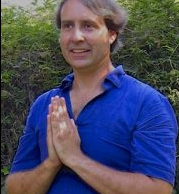Abstract
Introducing Thai Yoga, “Reusi Dat Ton,” and its place within the traditions of Buddhist Yoga and Mahasiddhas. Tracing its development from India into Nepal, Tibet and the Ancient Lanna Kingdom of Southeast Asia. Discussing the ways wind is managed in “Reusi Dat Ton” from breathing techniques and visualization to self-massage, joint mobilization and full body exercises. Featuring images of techniques as depicted in traditional artwork including: statues, murals, and illustrations from manuscripts.
Questions for reflection
What are some of the manifestations of “Wind” in your body?
Name some examples of “Sen Lines” in your body?
What are some of the ways “Wind” is managed in Reusi Dat Ton?
Discuss the origins of Traditional Thai Massage.
Further reading
Baker, Ian A. and Thomas Laird. (2000). The Dalai Lama’s Secret Temple: Tantric Wall Paintings from Tibet. Thames & Hudson Ltd., London, UK.
Gharote, M. L. (Editor in chief). (2013). “Encyclopaedia of Traditional Asanas (Second Edition).” The Lonavala Yoga Institute. Lonavala, India.
Griswold, A.B. (1965). “The Rishis of Wat Po.” In Felicitation Volumes of Southeast Asian Studies Presented to His Highness Prince Dhaninivat Kromamun Bidyalabh Brindhyakorn. The Siam Society, Bangkok, Thailand.
Jacobsen, Nephyr Anne. (2015). Seven Peppercorns: Traditional Thai Medical Theory for Bodyworkers. Findhorn Press. Forres, U.K.
Linrothe, Rob, (Editor). (2006). Holy Madness: Portraits of Tantric Siddhas. Rubin Museum of Art and Serindia Publications. New York and Chicago, USA.
Mallinson, James. (2012). “Yoga and Yogis.” Namarupa, Categories of Indian Thought, Issue 15, Volume 3, March 2012.
Matics, Kathleen Isabelle. (1978). :An Historical Analysis of the Fine Arts at Wat Phra Chetuphon: A Repository of Ratanakosin Artistic Heritage,” PhD Dissertation, New York University, New York, USA.
Matics, K.I. (1977). “Medical Arts at Wat Pha Chetuphon: Various Rishi Statues.” In Journal of the Siam Society, 65:2: 2: 145-152. The Siam Society, Bangkok, Thailand.
Norbu, Chogyal Namkhai. (2008). Yantra Yoga: The Tibetan Yoga of Movement. Snow Lion Publications, Ithaca, USA.
Salguero, C. Pierce, (2007). Traditional Thai Medicine: Buddhism, Animism and Ayurveda. Hohm Press, Prescott, USA.
Subcharoen, Pennapa and Deewised Kunchana (Editors). (1995). The Hermits Art of Contorting: Thai Traditional Medicine. The National Institute of Thai Traditional Medicine, Nontaburi, Thailand.
Tulku, Tarthang. (1978). Kum Nye Relaxation: Parts 1and 2. Dharma Publishing, Berkeley, USA.
Tulku, Tarthang. (2003). Tibetan Relaxation: Kum Nye Massage and Movement. Duncan Baird Publications, London, UK.
Wells, David. (2012). “Reusi Dat Ton: The Thai Hermit’s Exercises” in Yoga Mimamsa, July 2012, Volume XLIV No. 2, Kaivalyadhama, Lonavala, India.
Wells, David. (2016). “Self-Massage and Joint Mobilization of Traditional Thai Yoga: “Reusi Dat Ton” Part 1 Handbook.” Create Space, North Charleston, USA.
White, David Gordon. (1996). The Alchemical Body: Siddha Traditions in Medieval India. University of Chicago Press, Chicago, USA.
David Wells, C-IAYT, works as a Yoga Therapist in an Integrated Pain Management Clinic and provides Continuing Education for Yoga Teachers (YA), Yoga Therapists (IAYT), and Massage Therapists (NCBTMB). He served 3 years in Peace Corps Thailand and received Thai Massage and Thai Yoga, “Reusi Dat Ton”, certifications from The Wat Po School of Traditional Thai Medicine in Bangkok and The Thai Massage School of Chiang Mai, under the authorization of The Thai Ministry of Education and studied with Reusis in Thailand. He also received Advanced Yoga Teaching Certifications from Kaivalyadhama Yoga Institute, The Sivananda Yoga Center and The Yoga Institute of Mumbai in India.
Contact: david@wellsyoga.com www.wellsyoga.com

